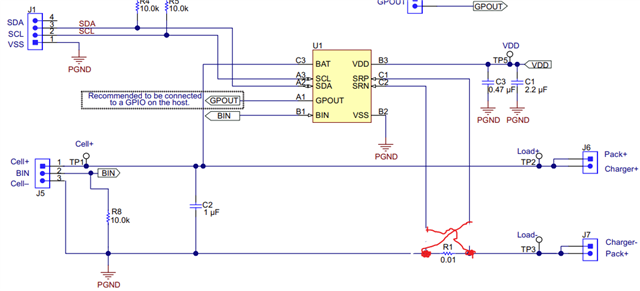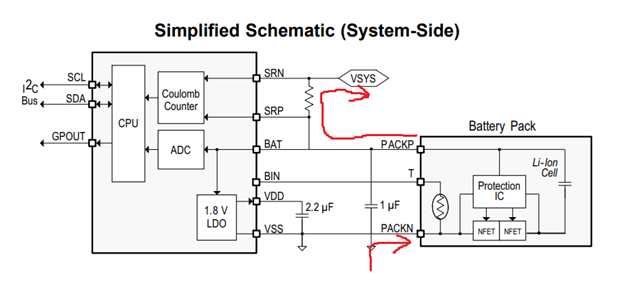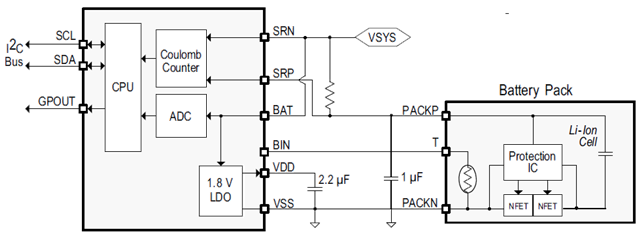Tool/software:
Hi everyone,
I have just been assigned to an ongoing design that uses a BQ27220 fuel gauge and I was wondering if the proposed connections were right or not. I happened to find an old thread that stated that the following schematic is wrong, since SRP and SRN connections are swaped and thus the fuel gauge would see battery discharge as charging and viceversa:

Considering the correct connections for SRP ans SRN (that would be SRN connected to Cell- and SRP to Charger-) I have one further question: would it be OK to connect GND to Charger- instead of Cell-? GND would be the overall device GND, so all other IC, including the BQ27220 and the charger of the device, would use it as GND connection.
Thanks in advance




